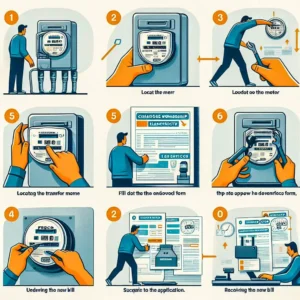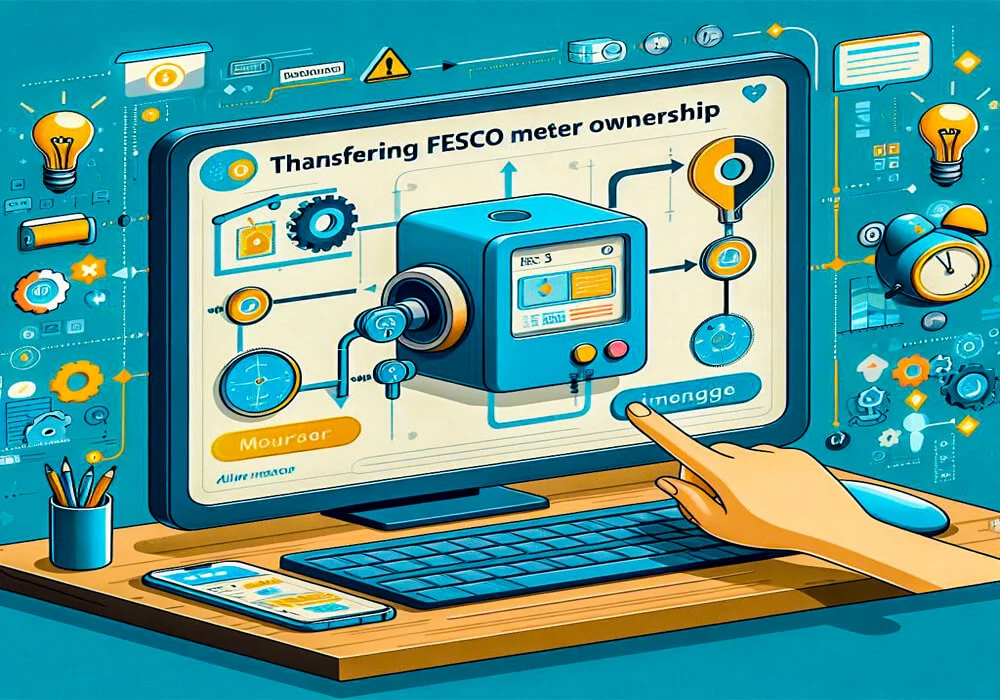How to Change Ownership of FESCO Meter?
Navigating the process of changing ownership of your FESCO meter can feel daunting, filled with paperwork and unclear procedures.
But worry not, this comprehensive guide will walk you through every step, from understanding the requirements to finalizing the transfer. By the end, you’ll be equipped to tackle this task with confidence.
Why Need for Ownership Change?
Several situations necessitate changing ownership of your FESCO meter:
1. Property Sale:
When selling a property, transferring the electricity connection to the new owner’s name ensures smooth billing and avoids future hassles.
2. Inheritance:
If a property with a FESCO connection is inherited, transferring it ensures proper account management and prevents billing delays.
3. Tenancy Changes:
In case of long-term tenant agreements, transferring the connection to the tenant’s name can simplify bill management and responsibility allocation.
Requirements for Ownership Change

Before embarking on the transfer process, ensure you have the necessary documents readily available:
1. Applicant’s CNIC copy (Attested):
Proof of identity for the new owner.
2. Current Consumer’s CNIC copy (Attested):
Proof of identity for the existing account holder.
3. Property sale agreement/inheritance certificate/tenancy agreement (copies):
Proof of ownership transfer or tenancy arrangement.
4. No Objection Certificate (NOC) from existing owner (if applicable):
In case of property sale or tenancy, the existing owner needs to provide an NOC confirming agreement to the transfer.
5. Transfer application form:
Available at FESCO offices or downloadable online.
6. Two witness CNIC copies (Optional):
Required for single-phase connections.
FESCO Meter transferring Process

Here’s a simplified breakdown of the transfer process:
1. Gather required documents:
Ensure you have all documents listed above in order.
2. Complete transfer application form:
Fill out the form accurately and legibly, referencing the required documents.
3. Submit application:
You can visit your nearest FESCO office or submit the application online through the FESCO website (instructions available on the website).
4. Payment and verification:
Pay the requisite transfer fee at the designated counter or online. FESCO will verify the application and documents.
5. Meter reading and final bill:
A FESCO representative will schedule a meter reading and generate a final bill for the outgoing owner.
6. Connection transfer and new account setup:
After payment of the final bill and verification, FESCO will transfer the connection to the new owner’s name and set up a new account.
Tips for a Smooth Transfer
1. Start early: Initiate the transfer process well in advance to avoid last-minute delays.
2. Clarify doubts: Don’t hesitate to contact FESCO customer service if you have any questions or concerns about the process.
3. Maintain communication: Keep both the existing owner and FESCO informed throughout the process to ensure smooth coordination.
4. Verify final bill: Carefully review the final bill before making payment to ensure all charges are accurate.
5. Keep documentation: File all relevant documents related to the transfer for future reference.
Frequently Asked Questions
What are the fees associated with changing ownership?
The transfer fee varies depending on the type of connection and location. Contact FESCO for specific details.
Can I transfer ownership online?
Yes, you can submit the application online through the FESCO website. However, document submission and final bill payment may still require visiting a FESCO office.
How long does the transfer process take?
The processing time typically takes around 15-20 working days, depending on verification and workload.
What happens to any outstanding dues on the existing account?
Any outstanding dues from the previous owner need to be cleared before the transfer can be completed.
Conclusion
Changing ownership of your FESCO meter doesn’t need to be a stressful experience. By understanding the requirements, following the outlined process, and staying informed, you can navigate this change with ease. Remember, clear communication and proactive preparation are key to a smooth and successful transfer.

Bord Jover is an expert in utility billing and customer service, specializing in FESCO (Faisalabad Electric Supply Company) accounts. With extensive experience in managing and resolving billing inquiries, Jover ensures accurate and timely information for customers. Known for a keen attention to detail and commitment to service excellence, Jover has become a trusted resource for navigating FESCO’s complex billing processes.







